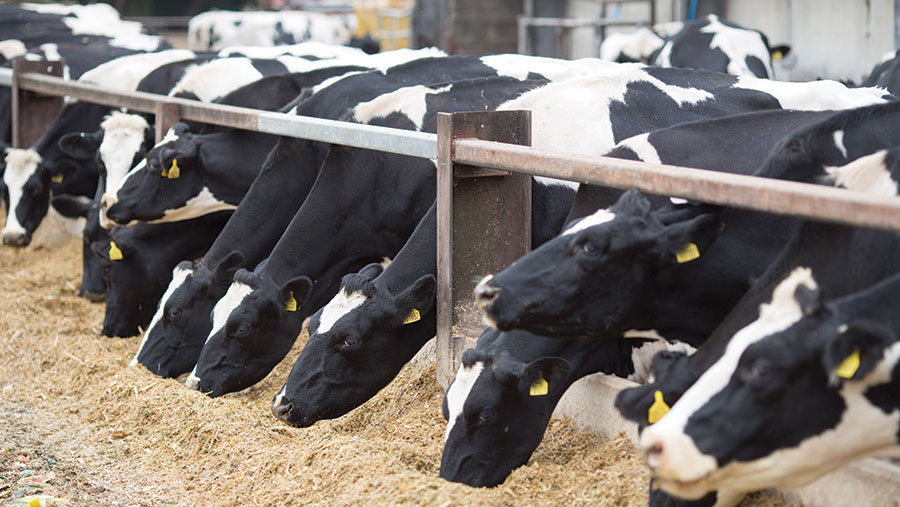Vet warns against abrupt end to supplementary feeding
 © Tim Scrivener
© Tim Scrivener A leading vet is warning that abruptly ending supplementary feeding, as a way of curtailing milk yields, could have long-term implications for cow health and fertility.
Some dairy farmers have been asked by their milk processors to reduce supply due to the drop in retail and food service milk demand caused by the coronavirus lockdown.
But BCVA board member and vet Phil Elkins warned that the this could jeopardise fertility and milk production for the rest of the lactation and beyond.
See also: What’s in Your Livestock Shed visits a £1.4m greenfield dairy
Mr Elkins said he appreciated that many farmers needed to make short-term decisions to survive, but said they needed to be aware of the long-term consequences.
Highest-risk animals
Mr Elkins said the highest-risk animals were those that had just calved.
Unless cow intakes are met post-calving, they can be predisposed to displaced abomasums.
Nutritional changes can also affect conception by compromising egg quality, which can reduce the number of cows that hold to service.
Mr Elkins said he was most concerned about all-year-round calving herds as they were more reliant on supplementary feeding and may not be in a position to turn cows out to grass.
Spring herds that were calving and already feeding cake in the parlour also needed to be careful, Mr Elkins added.
“The first three to four weeks of production sets the tone for the rest of the lactation,” he said.
“Cutting feed out of freshly-calved cows’ diets is a dangerous thing to do, especially if they have already received supplementation.”
Autumn-calving herds would be “most insulated” from any reduction in supplementary feeding, given that these animals should now be safely in-calf, he said.
He advised farmers to speak to their vet and nutritionist to formulate a plan.
Take home messages
- Maintain good rumen fill by ensuring good dry matter intakes. Aim for 3.5% of bodyweight. A 650kg dairy cow requires 22kg DM a day.
- Gradually reduce supplementary feed over 10-14 days if you flat-rate feed.
- If you are able to feed animals individually, instead reduce the amount fed to lower yielders or animals that are already in calf.
